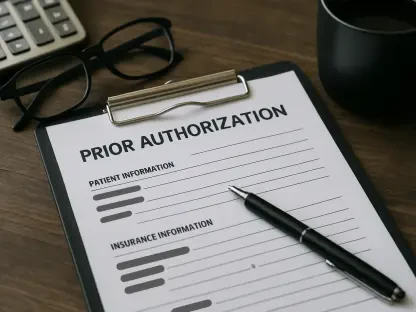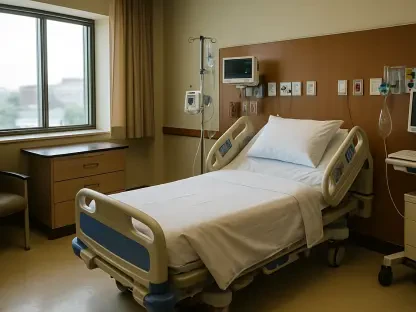In the rapidly evolving landscape of healthcare technology, few areas are as influential as the integration of digital solutions to improve patient care. Today, we have the privilege of speaking with James Maitland, an enthusiast in robotics and IoT applications in medicine, to address how technology can transform healthcare delivery. His deep-rooted passion drives a keen interest in how partnerships like the one between Blue Shield of California and Zocdoc can redefine patient experiences.
What motivated Blue Shield of California to partner with Zocdoc for scheduling appointments?
The partnership between Blue Shield and Zocdoc stems from the shared objective of seamlessly connecting members to available healthcare providers. Blue Shield recognized the need to upgrade from a traditional directory system, where members often faced frustrations in simply securing an appointment. They were motivated by a desire to enhance accessibility and user satisfaction by tapping into Zocdoc’s technological capabilities, which simplify the booking process significantly.
How does the collaboration with Zocdoc enhance the digital booking experience for Blue Shield members?
Through this collaboration, members are empowered with real-time access to providers’ schedules directly from Blue Shield’s platform. This eliminates cumbersome steps like phone calls to multiple offices, offering a streamlined experience where appointments can be booked instantly. The integration bolsters the convenience factor, fulfilling the modern expectation of a fully digital healthcare journey.
Could you explain the significance of the “last-mile infrastructure” mentioned in the partnership?
The term “last-mile infrastructure” refers to the critical connection that Zocdoc has developed over years, integrating their system with various providers’ scheduling setups. This infrastructure paves the way for Blue Shield members to gain immediate access to providers’ real-time availability and book appointments without any intermediaries. Essentially, it’s about bridging the gap between technology and practical accessibility for patients.
What were the challenges with Blue Shield of California’s previous provider directory?
Previously, the provider directory functioned more like a digital phonebook, limiting its utility to listing provider information without aiding the booking process. Members often faced delays in care due to the cumbersome task of manually calling providers to check appointment availability. This outdated system was a significant barrier to accessing care efficiently.
How does the new system improve upon the old method of finding and booking in-person appointments?
The new system leverages Zocdoc’s capabilities to provide a much more interactive and responsive platform. Members can not only find providers but also view their real-time availability and secure appointments with a few clicks. This immediate process contrasts sharply with the previous method of manually reaching out to multiple providers, enhancing both speed and user experience.
How many hours of provider availability is expected to be made available each month through this partnership?
The partnership is expected to make a remarkable one million hours of provider availability accessible each month. This ambitious target ensures that members have an extensive range of options across various specialties when seeking to book healthcare appointments.
Why was it important to offer a million hours of provider availability per month before launching this feature?
Ensuring such a vast amount of availability was key to meeting the commitment of providing substantial value to users. Offering a million hours means that the feature isn’t limited to a select group but is instead a comprehensive solution, capable of addressing the needs of the entire member base across numerous specialties.
How does the program incentivize providers to opt into the scheduling system?
The program incentivizes providers by allowing them to join the scheduling system for free, thus lowering the barriers to entry. This incentive is designed to encourage widespread adoption amongst providers, further expanding the network available to Blue Shield members without imposing additional costs on the providers themselves.
Is there a cost for providers to join the scheduling program, or can they participate for free?
Providers can participate in the scheduling program without incurring any costs. This absence of fees is central to promoting broad participation and ensuring that a diverse array of providers, regardless of size or specialty, can join the system effortlessly.
What has been the feedback from providers and members since the rollout of this new feature?
Feedback from both providers and members has been overwhelmingly positive. Members appreciate the ease and immediacy of the new booking system, contributing to a higher satisfaction rate. Similarly, providers benefit from the reduction in administrative burdens and improved patient engagement, fostering a more efficient healthcare delivery process.
How has this new feature impacted member satisfaction according to your observations?
The new feature has significantly boosted member satisfaction by simplifying the process of finding and securing appointments. Members no longer experience the frustration and delays associated with traditional booking methods, leading to a more pleasant overall interaction with their healthcare provider.
Can you elaborate on the type of care and specialties available through this new booking system?
The booking system offers a comprehensive range of care, including primary care as well as over 150 different specialties. This includes not just physical health providers but also mental health professionals, vision specialists, and dental care providers, truly covering the spectrum of members’ healthcare needs.
In what ways does Zocdoc’s technology integrate with various electronic health records (EHRs)?
Zocdoc has excelled in creating integrations with a multitude of EHR systems through an API. Their technology acts as connective tissue, interfacing effortlessly with existing EHRs to ensure that data flows seamlessly across platforms, ultimately enhancing the efficiency of appointment bookings and patient record management.
How many providers nationwide have been connected through Zocdoc’s platform?
As part of their nationwide efforts, Zocdoc has successfully connected approximately 200,000 providers. This extensive network underscores their capability to facilitate connectivity and accessibility for patients across the United States.
What proportion of bookings on Zocdoc.com are for primary care versus other specialties?
On Zocdoc.com, just under 20% of appointments are booked with primary care providers, including pediatricians and OBGYNs. The remaining 80% span a diverse array of specialties, highlighting the platform’s broad appeal and ability to cater to varied patient needs.
How does this new system align with consumer expectations for digital booking experiences?
Today’s consumers expect swift, intuitive digital interactions, and this system aligns perfectly with those expectations by offering a seamless and immediate way to book healthcare appointments. This alignment not only meets but often exceeds user expectations, reflecting broader trends in digital experiences across industries.
What future enhancements or expansions are planned for this partnership?
Future plans likely focus on expanding the roster of participating providers and further refining the user experience to meet evolving consumer expectations. There may also be enhancements to the technology itself, aiming to integrate new digital tools and features that address emerging healthcare needs and trends.
What is your forecast for the integration of digital solutions in healthcare?
Digital solutions are poised to become even more integral to the healthcare ecosystem, continuing to drive improvements in patient accessibility, personalized care, and data-driven decision-making. As these technologies evolve, they will likely enable more proactive and preventative healthcare models, ultimately transforming the patient experience and outcomes.









